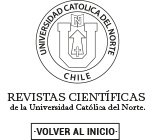Plagiarism and self-plagiarism
Prohibition of plagiarism and self-plagiarism
For the purposes of this policy, originality must be considered from two perspectives: first, as the certainty that the work comes from the person who claims to be its author (plagiarism to third parties); second, that it is new and different from others previously created by the same author (self-plagiarism). The concept of plagiarism refers to the existence of a substantial copy of one's own or another's work, that is, the essential or fundamental coincidence involving a copy of phrases or paragraphs that induce the reader to deceive itself regarding the author's contributions.
It is the responsibility of the author(s) to ensure the originality of the articles contributed to the journal, as well as the veracity of the data and results included in them, expressing clearly and concisely that the contents are original and have not been copied, invented, distorted or manipulated.
In a first formal revision, the Editorial Committee will verify in the texts if any of these conducts are presented. For such effects, Revista de Derecho (Coquimbo. En línea) has a subscription to a similarity detection software.
In case of detecting some degree of plagiarism or self-plagiarism, it will be communicated to the author(s) of the work submitted for evaluation.
Recommended good practices:
Plagiarism:
1) Knowledge of the relevant intellectual property protection rules, and the consequences of their infringement.
2) Carrying out honest research, in which there is recognition of the origin of the ideas expressed in the text subject to the editorial process.
3) Respect and observance of the formal instructions that the journal has at the authors' disposal, whose objective is that the ideas expressed be known clearly and uniformly.
Self-plagiarism:
1. To inform the Editorial Committee that the work submitted is part of a project or research line, indicating its differences with other works published preliminarily.
2. When presenting the work to the Editorial Committee, highlight its original and unpublished nature, especially in cases where the work is limited to a line of research developed by the author.
3. Cite works by the author, which refer to the same line of research, to account for previous developments by the author.
4. Knowledge of the relevant intellectual property protection rules and the consequences of their infringement.
Prohibition of Parallel Submissions (redundant publication)
Parallel submission of works to another printed or electronic publication is prohibited.
Submitting a paper to the journal implies that the author assumes a commitment of exclusivity, consisting of not presenting it in parallel to other publications, either totally or partially, through any means (physical or digital). This commitment will be maintained for the duration of the editorial process.
In case this bad practice is detected, the Director reserves the right to communicate with its peer from the other journal involved and report the fact.
Recommended good practices:
1. Properly choose the seat or publication to which the work will be sent for consideration. It is recommended to use criteria such as visibility, indexing, editorial lines, etc.
2. Inform the Editorial Committee of the decision to withdraw the work from consideration, before submitting it to the editorial process of another publication




_(1).png)












